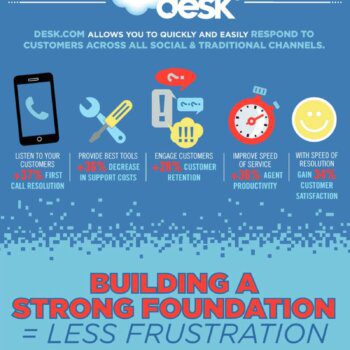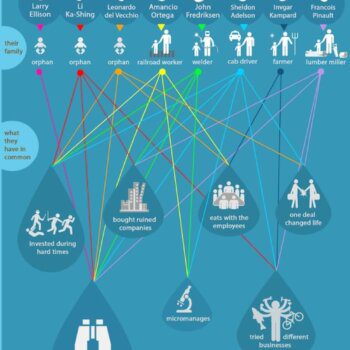We are familiar with the funnel illustration in business graphics as used to articulate parts of the sales or lead generation process. Most of these infographics end with the conversion of the lead into a customer but is that the only happily-ever-after that businesses should aim for?
In this series of posts on flipping the funnel we take a look at what happens once you have the customer — how you retain and even potentially grow that customer into a marketing channel for your business by transforming your sales funnel into a marketing megaphone.
You may be skeptical but in this era of socially-enabled B2B marketing, this is something that few businesses are harnessing.
KPI – the bugbear?
Most marketing resources and mindshare are devoted to new lead generation or netting new names. Once in a (long) while we also see some lead nurturing mixed in, the process of cultivating a prospect to become a customer.
Conversely very little effort is expended from the marketing side to retain these existing customers or better yet convert the existing customers to act as your marketing channel. So why do marketers tend to focus only on lead generation?
The biggest reason behind that is the KPI (key performance indicators) of marketing departments. Marketing KPI is predominantly measured by the number of new leads generated. Only a small part focuses on nurturing leads. Another factor at play is the lack of systematic life-cycle customer management. Companies that do have such systems, especially in the case of B2B, usually believe that customers are high-touch and therefore the job of the account manager or sales people,thereby omitting the marketing department’s involvement.
It doesn’t have to be like that. Marketing can play a major role in retaining customers and converting your existing customers into your marketing megaphone. How so? You do that by flipping the funnel. You build advocates out of your existing clients and not just retain them. After all nothing resonates more with future customers than the testimony of existing ones.
Create a captive audience
The first and possibly most important step to begin to flip your funnel is converting your existing customers into a captive audience. The process begins with mapping your typical buyers persona metrics. While you carry out this exercise you will be able to identify the missing personae in your existing customers and have a blueprint against which to map a very specific, targeted, and shareable content marketing strategy.
Cover the buying centres
Quite often when a first sale is made or even after a couple of sales are booked, companies tend to forget that the people they are constantly interacting with might not be the only people who are involved in the buying process. Often there are people outside our circle of interaction that are the buying decision makers or influence and impact the decision maker metrics. To reach out to all of these missing people or these people who are not in your database, there are several strategies marketing department can deploy:
Find and fill in the missing personas
One strategy that has worked very successfully for many of our clients is the internal referral scheme. This means asking your sales department to update the database with the missing customer names. Run a small incentive-based contest to update all the business cards into the marketing database or subscriber list. You can then use this database to reach out with your content marketing strategy for retaining more customers.
The second option is to do a referral campaign targeted to your existing customers. You can run a small contest via a targeted eDM campaign or an eDM referral campaign where your customer can refer their colleagues name and designation along with some contact information to win a small lucky draw prize or some other incentive.
These are all pro-active approaches. There are also reactive measures you can undertake to map those gaps. LinkedIn can be used very efficiently to map out and identify the missing people in your customers list to find out whom you need to be targeting to get their information into your database.
With this basic foundation in place we can begin the process of flipping our funnel. In the second installment of our series we will explore how to formulate and execute your content strategy for customer retention.
____________________________________________
About the Author
This article was produced by B2Bento, a platform that aims to capture what is quintessential about B2B tech marketing in Asia with a focus on Singapore, India and Asia-Pacific as a whole. see more.






























